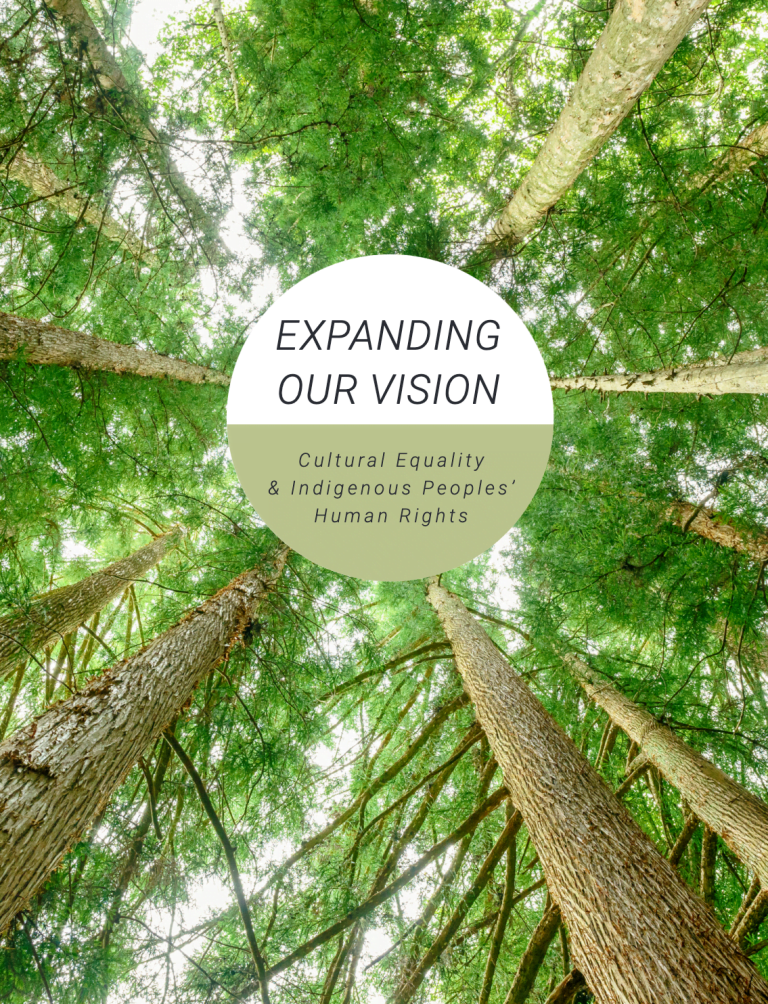9 search results
for
Racism
Guiding recommendations
Recommendation 2: Advocate to add Indigenous identity as a protected ground to the Code. Current grounds of discrimination under the Code (including based on race, colour, ancestry or religion) do not adequately address the discrimination Indigenous Peoples report experiencing. This would send a message of inclusion and reflect the individual and collective nature of Indigenous human rights.-
Category and theme:
Groups affected:
Location of recommendation:
Increase Indigenous involvement within the BCHRT
Recommendation 13: Audit the current HR process to identify why Indigenous Peoples are not being recruited or hired. Provide specific training to HR staff on how to actively recruit and fairly assess Indigenous applicants. Seek specific mentoring advice from other organizations with higher Indigenous staff ratios about how to address this underrepresentation. The BCHRT should set yearly hiring targets for the first five years, and report on success in meeting those targets in annual reports.-
Category and theme:
Audience:
Groups affected:
Location of recommendation:
Micro-discriminations
Recommendation 20: The BCHRT, partnering with the Office of the Human Rights Commissioner, should create public education and awareness about micro-discriminations against Indigenous Peoples. The focus of the education would be to bring unconscious and pervasive bias to light so that it can be addressed.-
Category and theme:
Audience:
Groups affected:
Location of recommendation:
Addressing systemic racism
Recommendation 22: Develop a baseline of information and understanding of the racism that Indigenous Peoples experience so that individual complainants are not put to a process of proof again and again. Advance research or statements about common areas of discrimination experienced by Indigenous Peoples. This would operate similar to judicial notice of facts that are beyond dispute, as encouraged by the Supreme Court of Canada in cases such as Williams, Gladue, and Ipeelee.-
Category and theme:
Audience:
Groups affected:
Location of recommendation:
Trauma-informed approach
Recommendation 29: Adopt a trauma-informed practice overall, including for assessing and accommodating delays or requests for extensions. The BCHRT staff and tribunal members should be provided with training on how trauma may impact Indigenous Peoples’ actions or interactions within the BCHRT system.-
Category and theme:
Audience:
Groups affected:
Location of recommendation:
Clarify special exemption
Recommendation 30: Educate employers about s. 42. Education should highlight where a fair consideration of Indigenous applicants (for example, strongly weighing Indigenous knowledge and experience) does not require an exemption.-
Category and theme:
Groups affected:
Location of recommendation:
Gatekeeping function
Recommendation 33: Track and report on claims made by Indigenous Peoples that are rejected at the application stage or under s. 27, or sent back for further detail and not pursued. An analysis of the claims that are procedurally weeded out may reveal where further action or training is necessary.-
Category and theme:
Audience:
Groups affected:
Location of recommendation:
Gatekeeping function
Recommendation 34: Institute an internal process for screening at first filing, and in s. 27 applications, by staff specifically trained in the issues Indigenous Peoples face as an immediate remedial measure, as so few Indigenous complaints are filed or advance.-
Category and theme:
Audience:
Groups affected:
Location of recommendation:
Need for legal representation
Recommendation 46: Partner with other organizations (such as the Office of the Human Rights Commissioner, CLEBC, law schools, Indigenous and legal organizations) to provide bootcamps and other training opportunities for lawyers or law students about Indigenous Peoples’ human rights. This case-based education should address the different elements in bringing a case: What is discrimination on prohibited grounds? Where are examples of evidence? Does the fact that no one witnessed an event mean that no case for discrimination can be brought? Training should include systemic features and intersectionality of the discrimination that Indigenous Peoples experience based on race and gender, geographic and socio-economic status, etc.-
Category and theme:
Audience:
Groups affected:
Location of recommendation:
